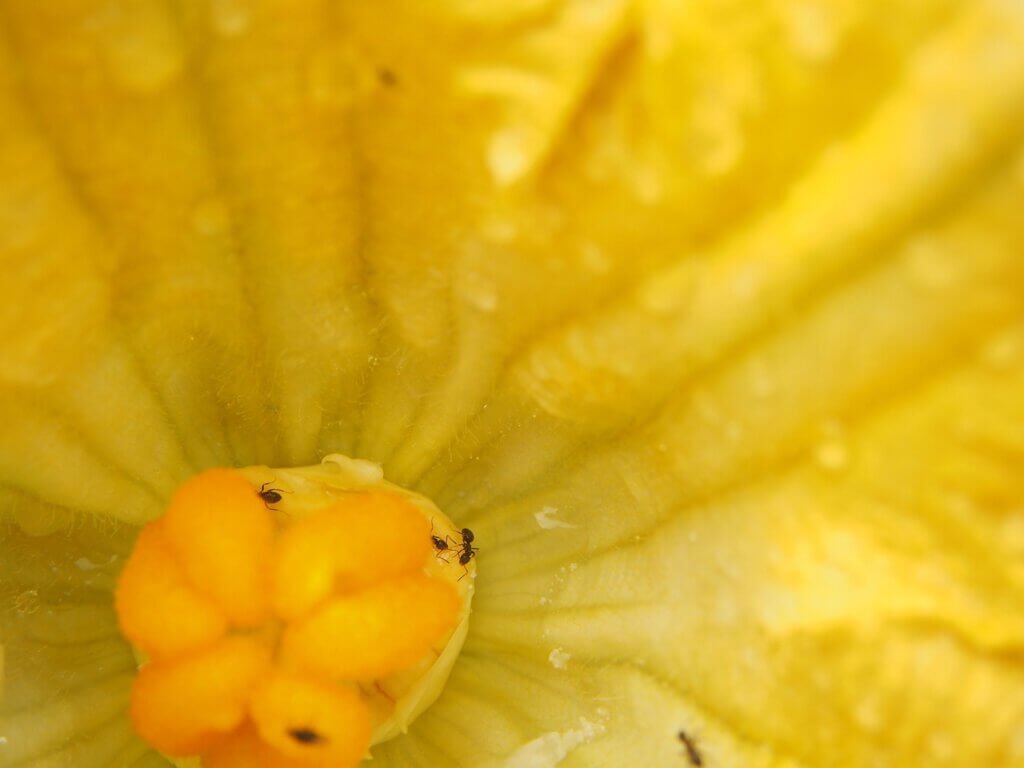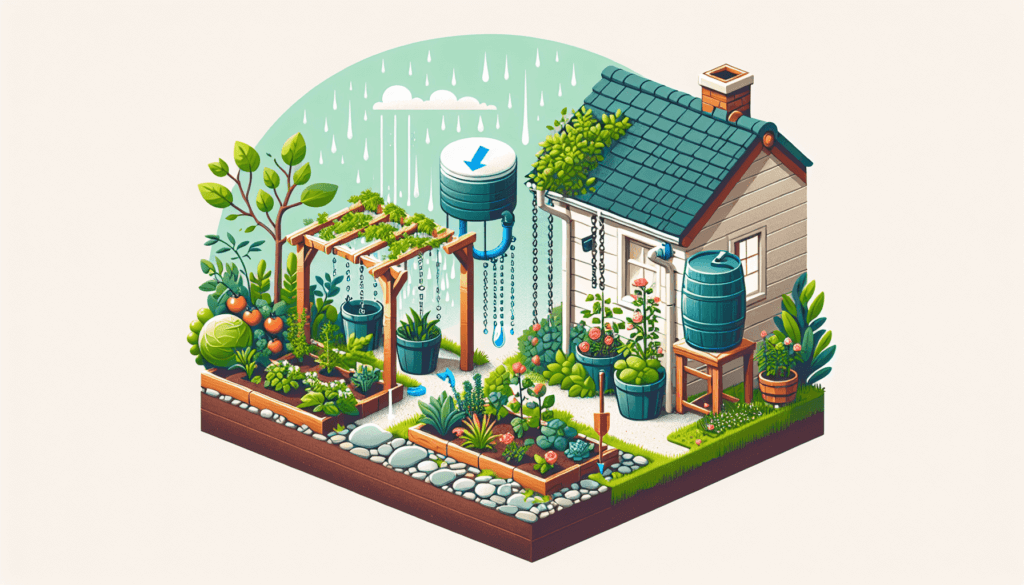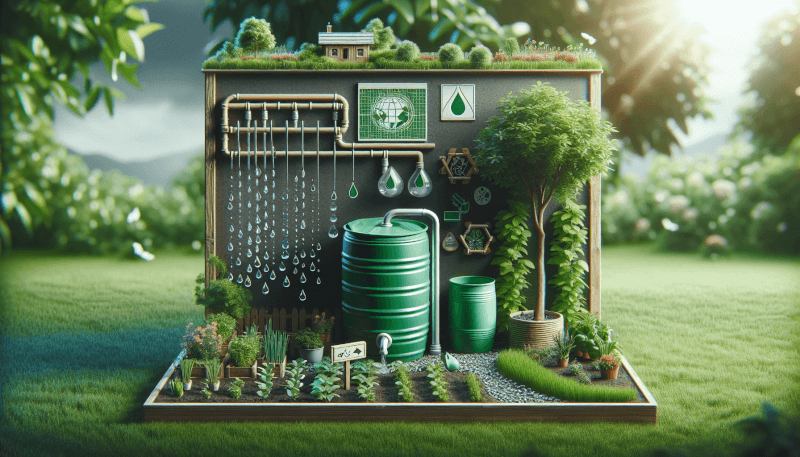Imagine having a lush and thriving garden, while also making a positive impact on the environment. With a DIY rainwater harvesting system, you can achieve both. By collecting and using rainwater to nourish your plants, you can reduce your reliance on city water and save money on your monthly bill. In this article, we’ll show you step-by-step how to build your own rainwater harvesting system for your garden, empowering you to go green and create a sustainable oasis right at your doorstep. So grab your tools and let’s get started on this rewarding project!
1. Assessing Your Garden’s Water Needs
Determine the size of your garden
Before you start building a rainwater harvesting system for your garden, it’s essential to know the size of your garden. The size of your garden will determine how much water you need to collect and store. Measure the total area of your garden to get an accurate estimate.
Calculate the average water requirements
Next, calculate the average water requirements of your garden. Consider factors such as the types of plants, the soil type, and the local climate. Different plants have different water needs, so it’s important to take that into account when designing your rainwater harvesting system.
Consider local climate factors
The local climate plays a significant role in determining the water needs of your garden. If you live in an area with high rainfall, your garden may require less water from the harvesting system. However, if you live in a dry or arid region, you may need to collect and store more rainwater to meet your garden’s needs.
Identify existing water sources
Before setting up a rainwater harvesting system, consider any existing water sources that you have in your garden. This could include a well, a pond, or even a nearby river or lake. Assessing the availability of these water sources will help you decide the size and capacity of your rainwater harvesting system.
2. Choosing the Right Rainwater Harvesting System
Explore different system options
There are several types of rainwater harvesting systems to choose from, depending on your needs and budget. Some common options include rain barrels, underground cisterns, and above-ground tanks. Research different types of systems to determine which one would be most suitable for your garden.
Consider available space and budget
When selecting a rainwater harvesting system, consider the available space in your garden and your budget. Some systems require more space for installation, while others can be more compact. Additionally, different systems come at varying prices, so it’s essential to choose one that fits within your budget.
Evaluate pros and cons of each system
Take the time to evaluate the pros and cons of each rainwater harvesting system. Consider factors such as ease of installation, maintenance requirements, and durability. Look for reviews and recommendations from other gardeners who have already used the system you’re considering.
Select the most suitable system for your garden
Based on your assessment of available space, budget, and the pros and cons of each system, select the one that is most suitable for your garden. Remember to consider not only the present needs of your garden but also any potential future needs or expansion plans you may have.

3. Obtaining the Necessary Permits and Permissions
Check local regulations and requirements
Before installing a rainwater harvesting system for your garden, it’s crucial to check the local regulations and requirements. Some areas may have specific guidelines or permits that need to be obtained before setting up a rainwater harvesting system. Ensure that you are familiar with the rules and regulations in your area.
Contact the appropriate authorities
To ensure compliance with local regulations, contact the appropriate authorities to inquire about the necessary permits and permissions for your rainwater harvesting system. They will provide you with the specific information and guidance on the steps you need to take.
Submit permit applications
Once you have gathered all the necessary information and documentation, submit the permit applications as required by your local authorities. Make sure to complete all the paperwork accurately and provide any additional information or drawings that may be required.
Ensure compliance with guidelines
After obtaining the necessary permits and permissions, ensure that your rainwater harvesting system is installed and maintained in compliance with the guidelines set by the local authorities. Regularly check for any updates or changes in regulations to ensure that your system remains in compliance.
4. Gathering Tools and Materials
Create a list of required tools
To build your rainwater harvesting system, create a list of the tools you will need. This may include items such as a drill, screws, wrenches, and a level. Having a comprehensive list of tools will ensure that you have everything you need before you start the installation process.
Make an inventory of necessary materials
Along with the tools, make an inventory of the necessary materials for your rainwater harvesting system. This may include items such as barrels or tanks, pipes, fittings, and filters. Check the specifications of the system you selected to ensure you have all the required materials.
Source items from local stores or online
Once you have your list of tools and materials, source them from local stores or online. Shopping around may help you find the best prices or deals on the items you need. Consider comparing prices and reading reviews to ensure that you are getting quality products.
Prepare any additional equipment
In addition to the tools and materials, you may need to prepare any additional equipment specific to your rainwater harvesting system. This could include items like a rain diverter or a leaf catcher to prevent debris from entering the system. Make sure to have these items ready before you begin the installation.

5. Designing the Rainwater Collection System
Plan the location of collection points
When designing your rainwater collection system, plan the locations of the collection points. These collection points are where the rainwater will be directed and stored. Consider placing them near gutters or downspouts for efficient water collection.
Determine the size and type of containers
Decide on the size and type of containers you will use to store the collected rainwater. This will depend on the amount of rainfall in your area and the water needs of your garden. Consider whether you want above-ground tanks or underground cisterns, and calculate the capacity needed accordingly.
Calculate the capacity needed
Calculate the capacity needed for your rainwater harvesting system based on your garden’s water requirements. Take into account the average rainfall in your area and the size of your garden. This calculation will help you determine the number and size of containers required for optimal water storage.
Consider overflow and filtration mechanisms
In your design, consider the mechanisms for overflow and filtration. Rainwater collection systems can fill up quickly during heavy rainfall, so incorporating overflow outlets will prevent overflow and potential damage. Additionally, include filtration systems to remove debris and ensure the quality of the stored rainwater.
6. Installing the Rainwater Harvesting System
Prepare the designated collection area
Before installing your rainwater harvesting system, prepare the designated collection area. Clean the area and remove any debris or obstacles that may hinder installation. Ensure that the ground is level and stable to support the weight of the containers.
Position and secure collection containers
Once the designated area is ready, position the collection containers in their designated locations. Depending on the type of system you chose, this could involve placing above-ground tanks or burying underground cisterns. Ensure that the containers are level and securely supported.
Connect gutters or downspouts to the system
To direct rainwater to the collection containers, connect your gutters or downspouts to the system. This may involve redirecting or extending existing gutters or downspouts. Position them in a way that allows efficient collection of rainwater and prevents leakage or overflow.
Install filters and screens
To maintain the quality of the collected rainwater, install filters and screens in appropriate locations. These will help prevent debris, leaves, and other contaminants from entering the system. Regularly clean and maintain the filters and screens to ensure proper functioning.

7. Implementing Proper Maintenance Practices
Regularly clean and inspect containers
To ensure the longevity and efficiency of your rainwater harvesting system, it’s important to regularly clean and inspect the containers. Remove any debris or sediment that may accumulate in the containers. Inspect for any signs of damage or leakage and address them promptly.
Remove debris from gutters and filters
Along with cleaning the containers, regularly remove debris from gutters and filters. Leaves, twigs, and other debris can clog the system and hinder water flow. By keeping the gutters and filters clean, you can prevent blockages and maintain proper functioning.
Monitor water quality
Regularly monitor the quality of the collected rainwater. Look out for any changes in color, odor, or taste. If you notice any abnormalities, it may indicate contamination and warrant further investigation. Test the water quality periodically to ensure it is suitable for your garden.
Perform routine system maintenance
In addition to cleaning and monitoring, perform routine system maintenance. This may involve inspecting pipes, fittings, and connections for any potential leaks. Replace any worn-out or damaged parts as needed. By regularly maintaining your rainwater harvesting system, you can ensure its optimal performance.
8. Utilizing Harvested Rainwater in Your Garden
Understand appropriate watering techniques
When utilizing harvested rainwater in your garden, it’s important to understand appropriate watering techniques. Different plants have different water needs, so adjust your watering practices accordingly. Avoid overwatering or underwatering your plants, as both can have negative effects on their health.
Optimize water distribution methods
Optimize the distribution of water in your garden to maximize its use. Consider installing irrigation systems or drip lines to efficiently deliver water to the plants’ root zones. This will help minimize water wastage and ensure that each plant receives an adequate amount of water.
Consider using a drip irrigation system
One effective way to utilize harvested rainwater is by using a drip irrigation system. Drip irrigation delivers water directly to the roots of plants, minimizing water loss through evaporation or runoff. It also reduces the chances of plant diseases caused by excessive moisture on leaves.
Monitor and adjust watering schedules
Regularly monitor the moisture levels of your plants’ soil to determine when to water. Adjust your watering schedules based on the rainfall and the needs of the plants. During periods of heavy rainfall, you may need to reduce watering, while in dry spells, you may need to supplement with additional watering.
9. Troubleshooting and Problem-solving
Identify common issues in rainwater harvesting
Rainwater harvesting systems may encounter common issues that require troubleshooting. These can include clogged filters, leaky connections, or inadequate water storage capacity. By identifying the common issues, you can proactively address them and prevent any potential problems.
Troubleshoot problems with the system
If you encounter any problems with your rainwater harvesting system, troubleshoot the issues to identify the cause. Check for any blockages, leaks, or malfunctions in the system. Refer to the user manual or seek professional advice if needed to resolve the problems.
Seek professional advice if needed
If you are unable to troubleshoot or address the issues with your rainwater harvesting system, don’t hesitate to seek professional advice. Consulting with a plumber or an expert in rainwater harvesting can help you identify and rectify any complex problems. They can provide valuable insights and guidance for optimal system performance.
Implement solutions to rectify issues
Once the problems have been identified, implement the necessary solutions to rectify the issues. This may involve replacing faulty parts, repairing leakages, or adjusting the system settings. Regularly monitor the system after implementing the solutions to ensure that the problems have been resolved.
10. Expanding and Upgrading Your Rainwater Harvesting System
Assess the effectiveness and capacity
Once your rainwater harvesting system has been operational for a while, assess its effectiveness and capacity. Evaluate if the system is meeting your garden’s needs and if it has sufficient storage capacity. Identifying any limitations or areas for improvement will help inform your decision to expand or upgrade the system.
Explore ways to increase storage capacity
If you find that your system’s storage capacity is insufficient, explore ways to increase it. This may involve adding additional collection containers, expanding existing containers, or installing larger tanks. Consider the available space, budget, and the needs of your garden when making the decision.
Consider rainwater treatment options
As you expand or upgrade your rainwater harvesting system, consider incorporating rainwater treatment options. Treating the collected rainwater can improve its quality and make it suitable for purposes beyond watering the garden, such as household use or irrigation of edible crops. Explore filtration, purification, and disinfection options based on your needs.
Upgrade the system as necessary
Based on your assessment and considerations, upgrade your rainwater harvesting system as necessary. This may involve replacing outdated components, adding advanced filtration systems, or integrating automated controls for efficient operation. Keep up with the latest advancements in rainwater harvesting technology to make informed decisions when upgrading your system.
By following these steps and guidelines, you can successfully build and maintain a DIY rainwater harvesting system for your garden. Not only will it help you conserve water and reduce your environmental impact, but it will also provide a sustainable source of water for your plants. Enjoy the benefits of rainwater collection while nurturing your garden and contributing to a greener future.


